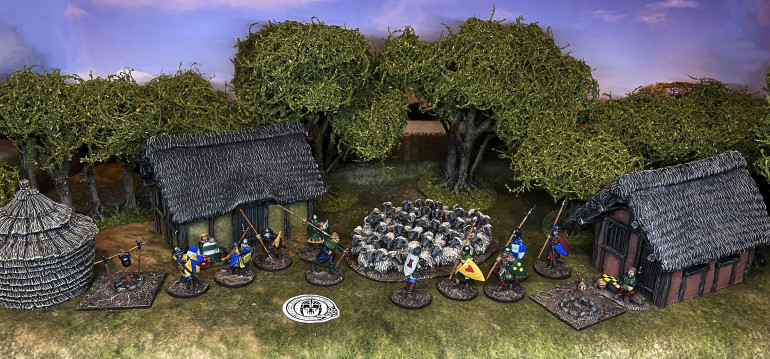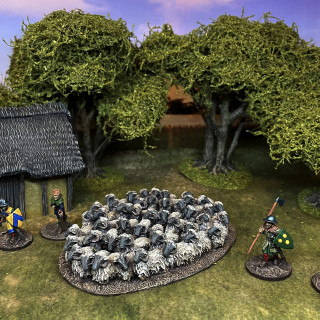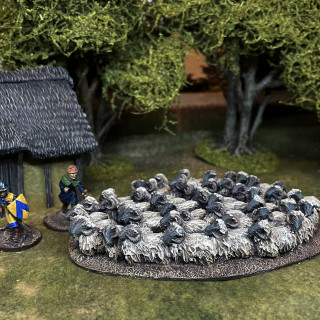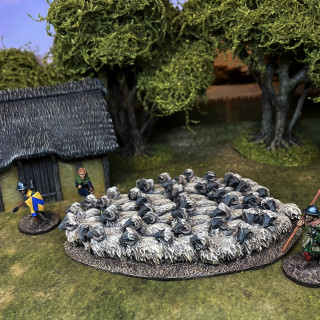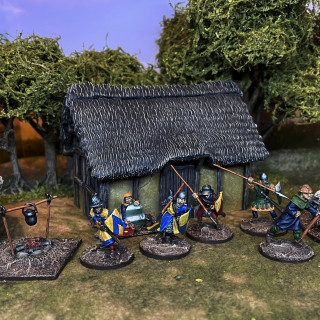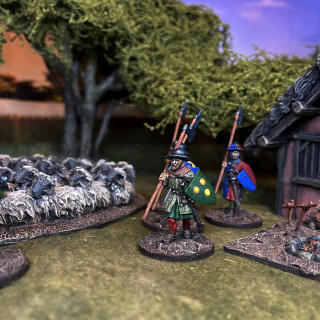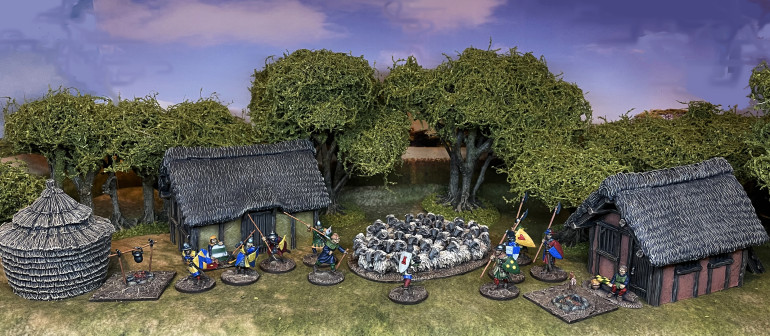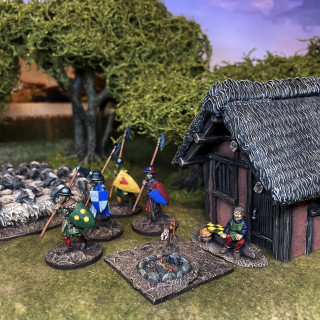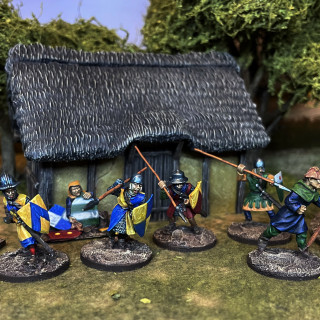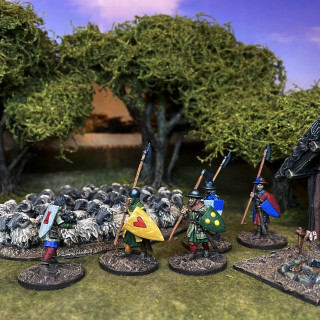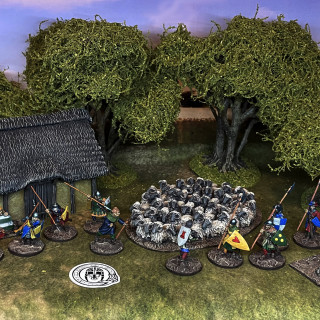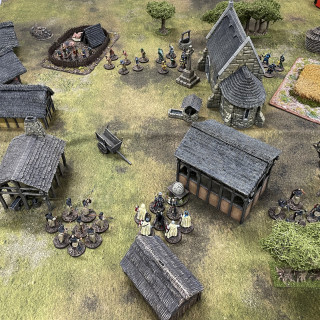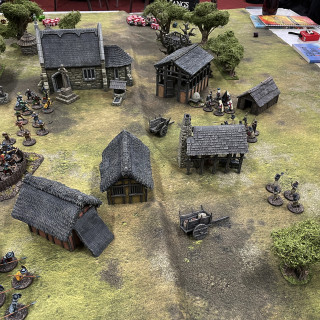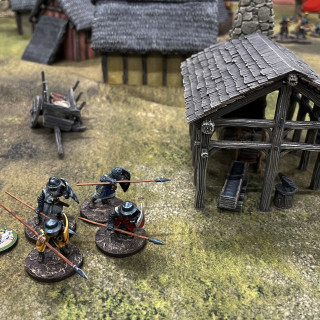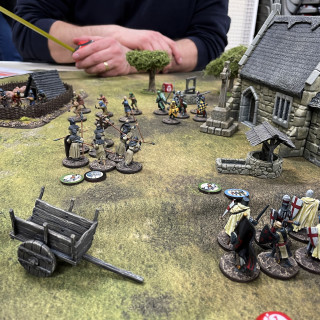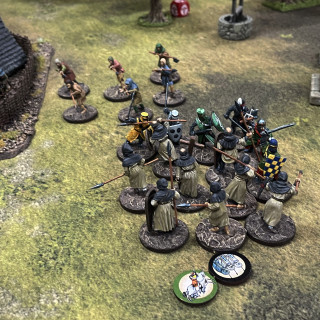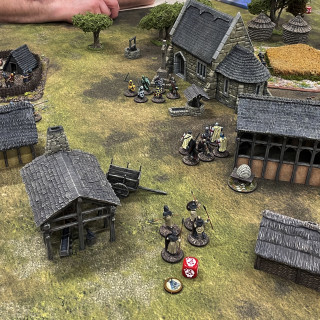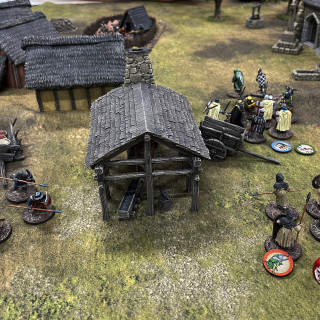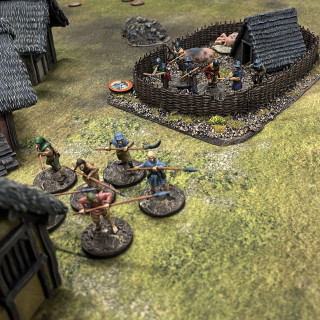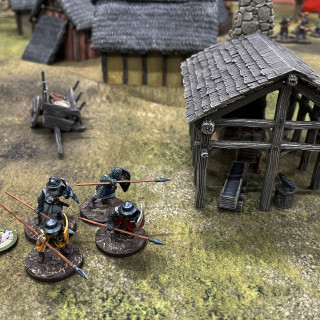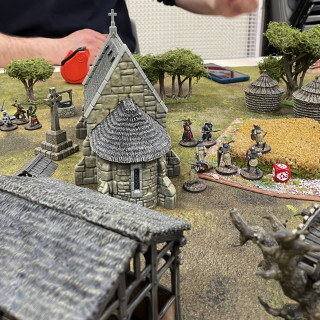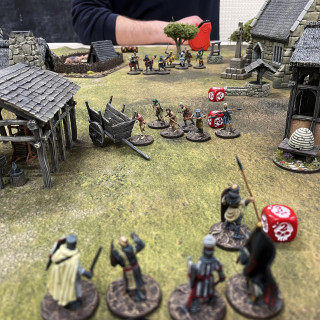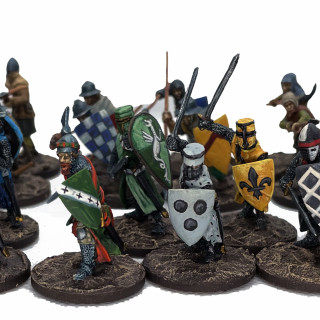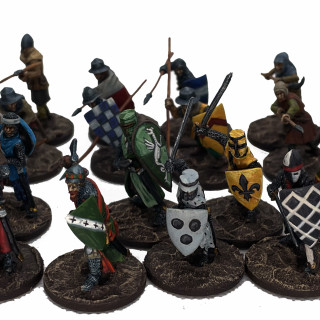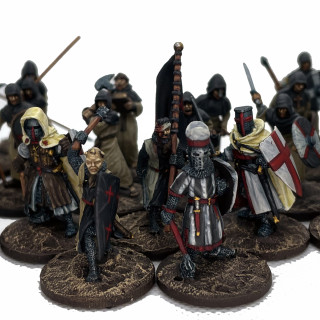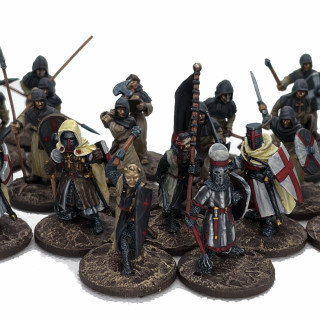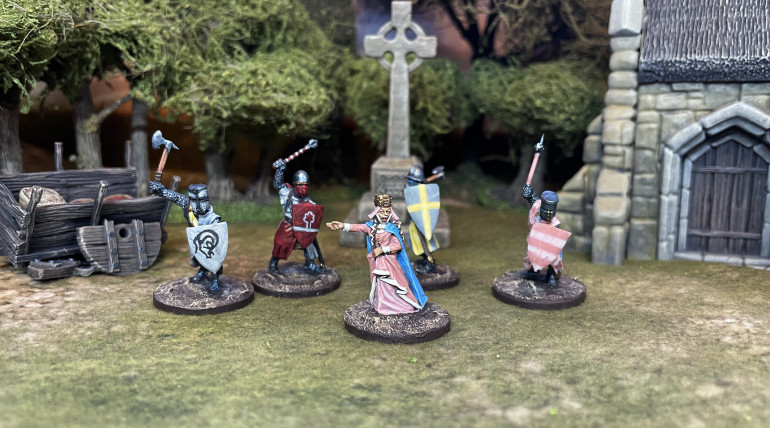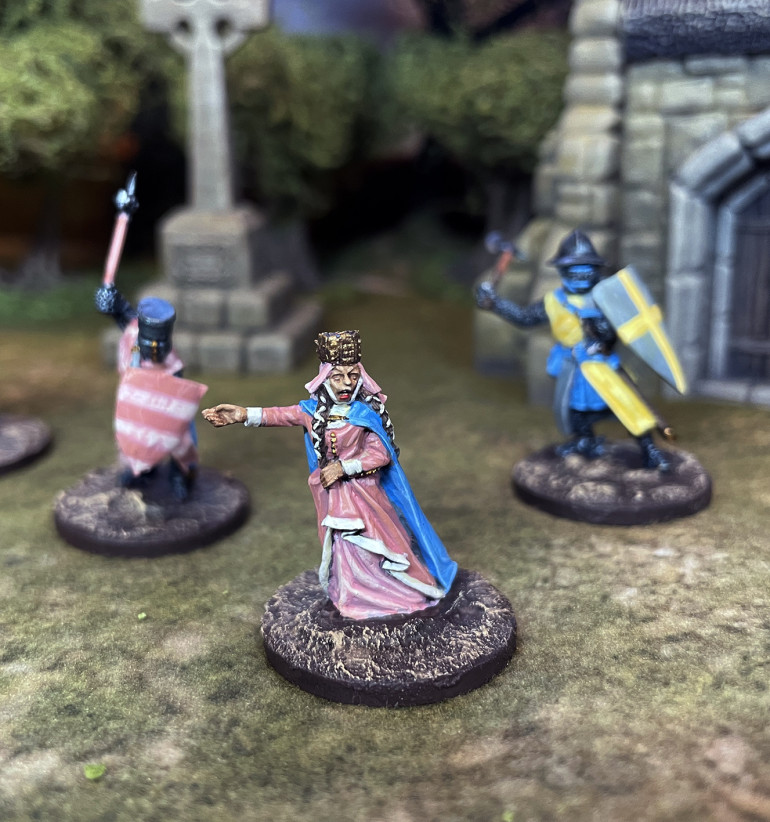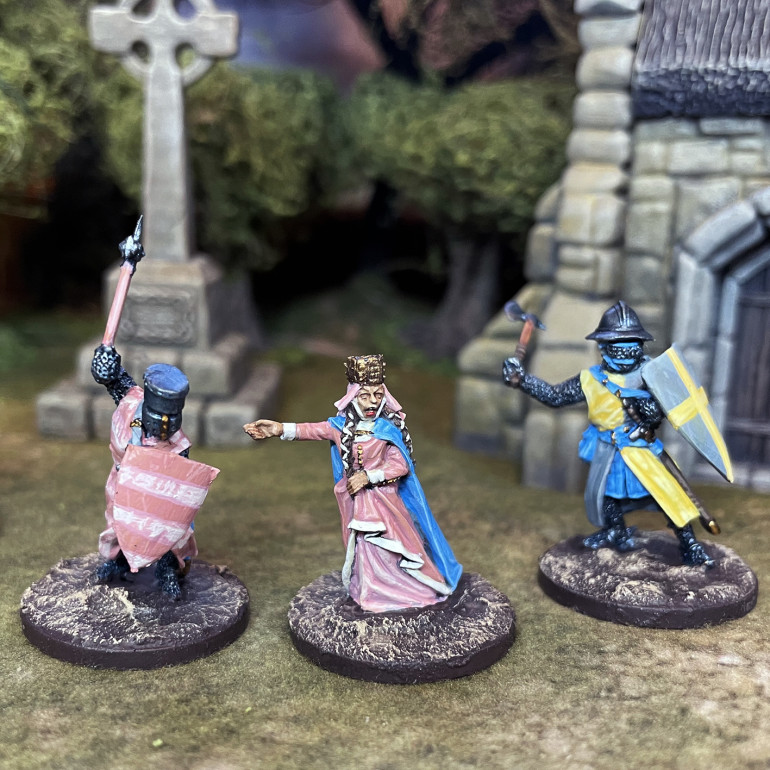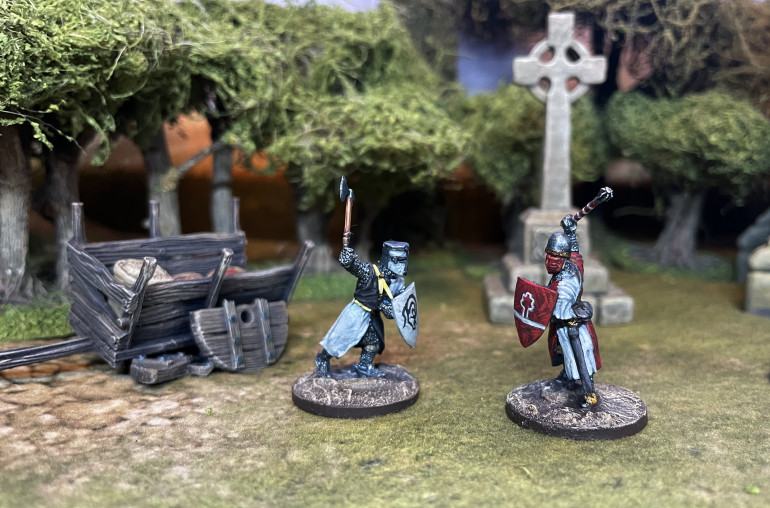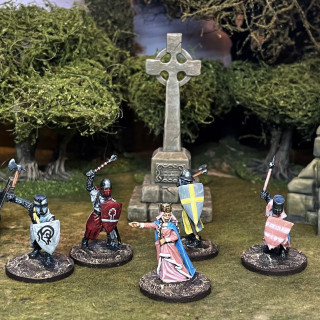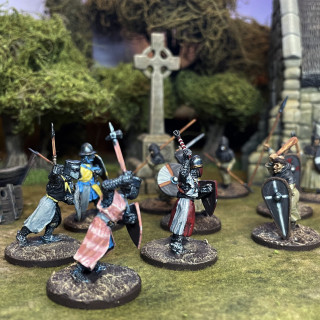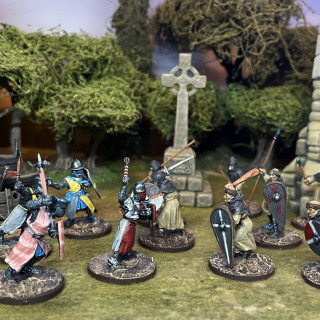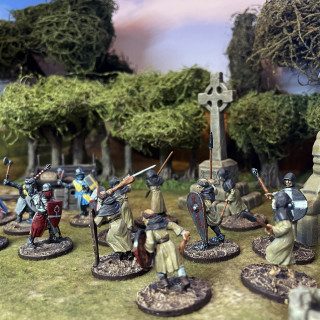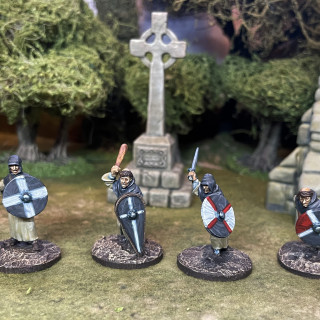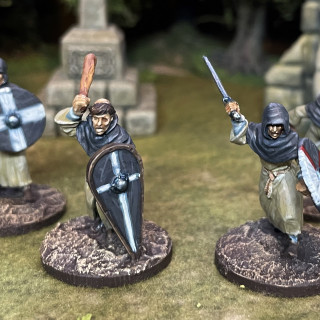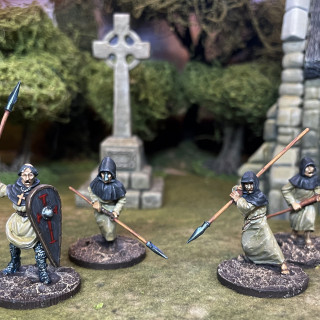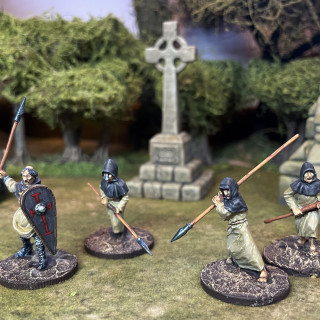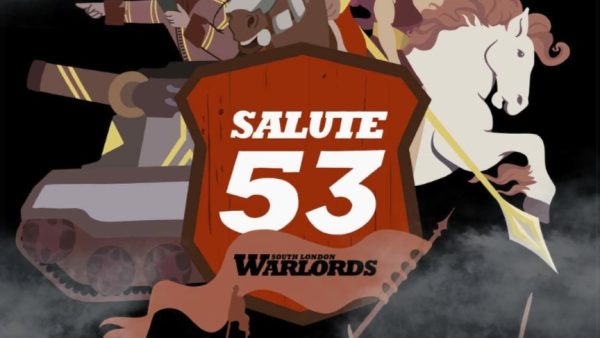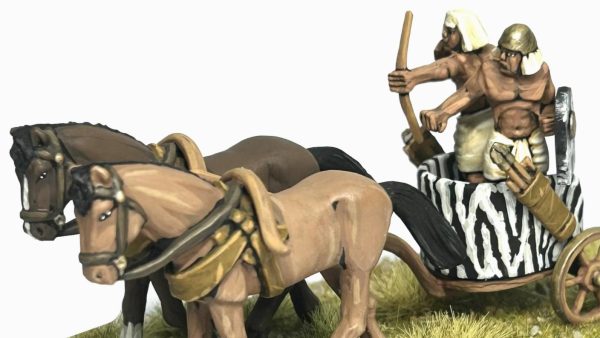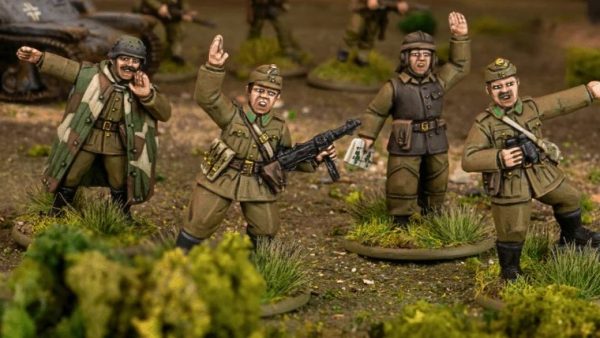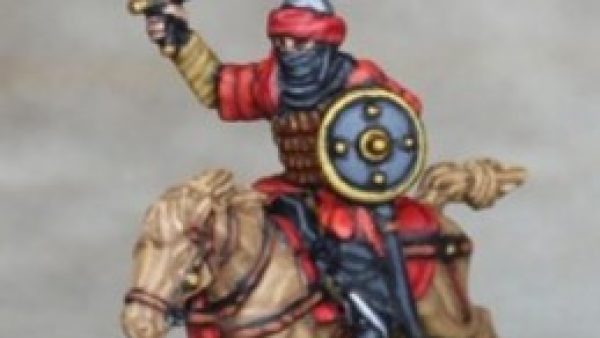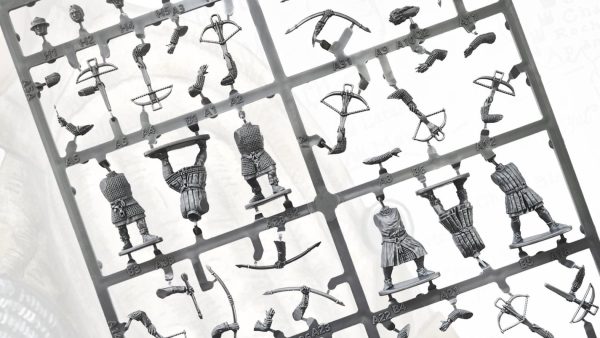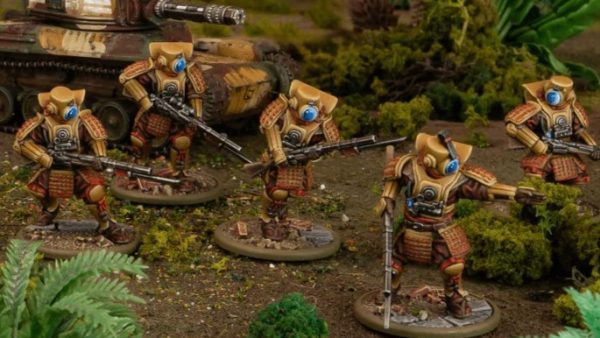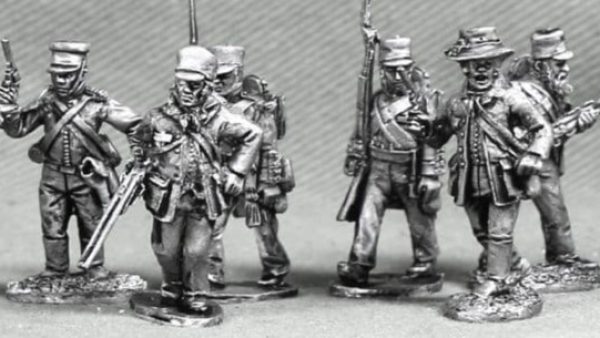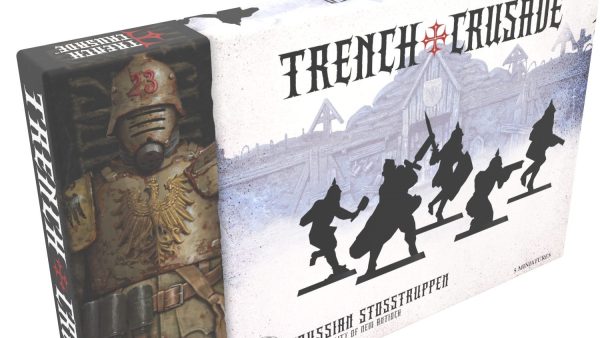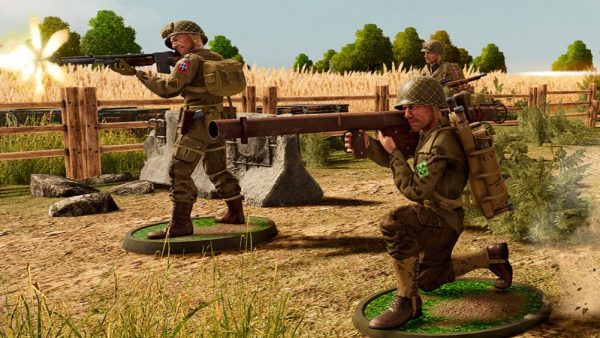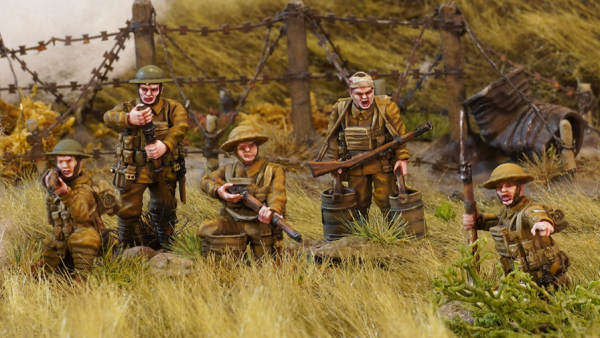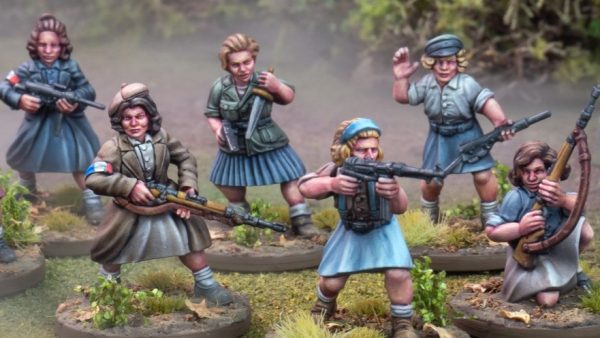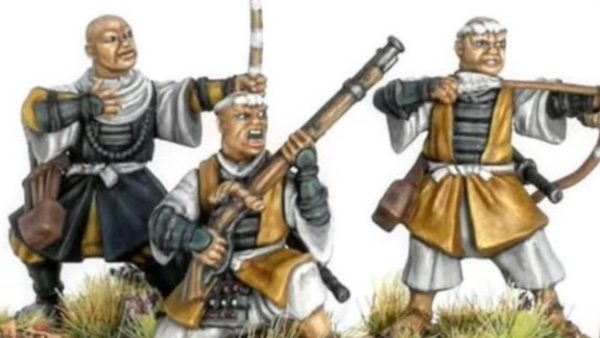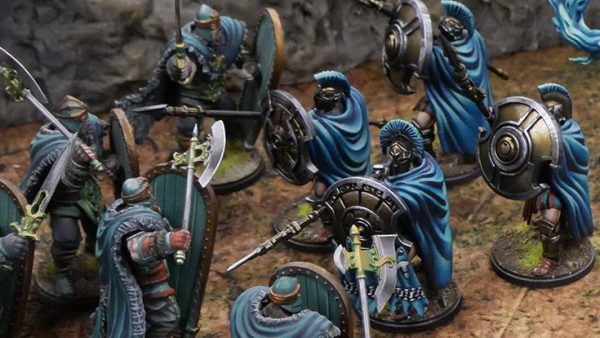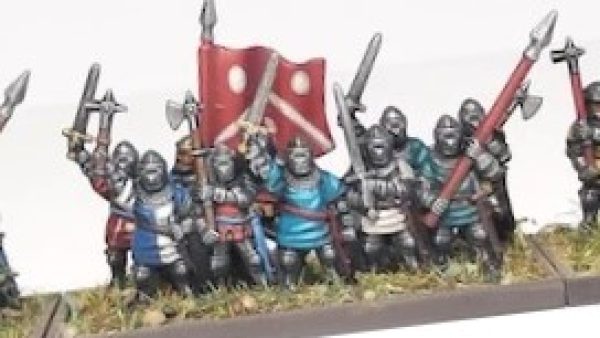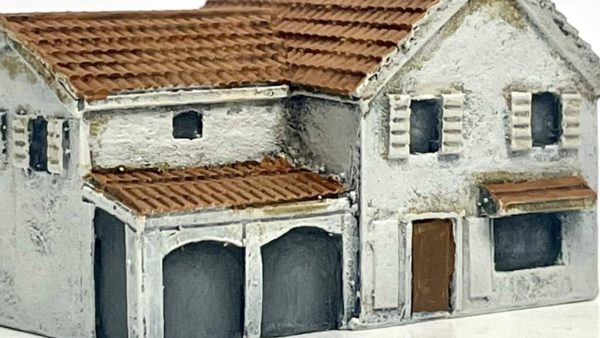
PanzerKaput Goes To Barons’ War
Recommendations: 11332
About the Project
Set against a backdrop of a Civil War that lasted for two years, 1215-17, as a result of the issuing of Magna Carta. A civil war was the perfect opportunity for the leading nobles of the time to grab land and power while settling some old scores along the way. This vying for land and power hadn't stopped since the invasion of 1066 with only the strongest of kings being able to keep their nobles in check. Our narrative focuses on small groups of warriors brought together under a lord or baron to raid and steal or defend land and property. With the strong, wise, cunning and lucky aiming to rise out of this civil strife in a better position than when it started. The Barons' War skirmish game has been written to enable players to fight out tabletop battles against the backdrop of the First Barons’ War between rival Barons or rival factions who find themselves on either side of the conflict. The game is historically themed, the gameplay is fast-paced and tactical with plenty of narrative and where force building presents you with lots of options enabling two players to muster very different retinues. However, as intended, this is an alpha set of rules which does not include rules for siege warfare, although rules for fighting in buildings are included. Campaign rules are something that will be addressed at a later date and released online. Having grown out of the Barons’ War Kickstarter project, the intention is for this ruleset to develop into a system that could be used throughout the Medieval period. Starting with England from when the Western Roman Empire withdrew around 410 AD to 1485 AD when Richard III died at the Battle of Bosworth Field. This presents us with a huge span of history for gaming which can be broadly divided into Romano-British, Anglo-Saxon and Viking, Anglo-Norman, Angevin and Plantagenet. And that’s just when looking at it from Great Britain. With warriors of this period being pretty similar, it would be easy to use the profiles in this rulebook to play out tabletop battles in any setting. Over time we see these rules evolving with additional warriors, characters, abilities and scenarios being added starting with the Dark Ages, the Anarchy and the Crusades and shared to www.warhost.online, which has been set up to be the community website for the game.
Related Game: The Barons' War
Related Company: Footsore Miniatures and Games
Related Genre: Historical
This Project is Active
New Video Uploaded More Bloody Sergeants and Sheep
I have uploaded my latest Video to YouTube about more Sergeants and Sheep for my The Barons’ War: A Medieval Skirmish Game.
I hope you enjoy it.
Border Reivers, The Border Wars
It’s a start of a new project and something that’s close to my heart and that’s the Border Reivers. Now I was lucky enough to be sent these samples from Iain at Flags of War for there upcoming Border Wars range. These are beautiful sculpts and full of character and really have the right feel to me. These are lovely clean castes and the pictures are just as they are.
The Border Reiver figures are being released via Kickstarter that hope to have around April/May once the above WAS range has been delivered. The first phase of the figures will see a starter set of 5 mounted, 8 foot and 5 characters along with animals.
The game will focus on small scale skirmish actions where looting and steal livestock will the main objectives but being Reiver killing, and vengeance will be high up on their priorities. Our sculptors have already complete the 3d sculpts for the next phase that will come after the delivery of the Kickstarter. The next one will be see a campaign book and a number of new character figures and a new Irish Faction.
Sheep in here
I have painted and finished some live, movable terrain for my collection in the form of a flock of sheep and also so camp equipment and followers, including a squire, all from 1st Corps. These are very nice additions to my collection and I have made some simple rules for the sheep, stolen from Gangs of Rome really.
The rules are simple, roll a d10 and the point on it is the direction they move and the number is the distance in inches or centimetres. Simple.
More Bloody Sergeants
I have finished some more guys, well sergeants actually, for my collection and I am pleased with the results. These are doubles of what I already have but this time I have swapped the weapons about so the ones attacking have spears and the ones marching have bills. These means I should have more variety.
The heraldry and liveries are totally fictitious, as is many of my knights and sergeants that I have painted, them mainly based on football teams and my wife Bob Balls collection. I have used the rules of Early Medieval heraldry but they are still made up and if over to you guys to decide if that’s wrong.
Lady Bonne, Her Knight Protectors and more Milites Christi.
I have finished Lady Bonne of Keyham Court and some more knights to add to my collection. Lady Bonne was the free figure that Footsore gave away, it is Empress Matilda for the Anarchy and instead of using her for the Empress I have decided to repurpose her as another Lady to lead a force in my games or to be an objective marker in a Game.
She is a lovely figure to paint as Paul Hicks is an amazing sculptor as she is full of character.
I have accompanied her with some knights that have all had simple weapon swaps to add more variety to my knights. I have removed the swords and a mace from the knights and giving axes, picks and maces, and I think they work rather nicely.
The knights are based on the following:
Sir Bonneville, personal knight and bodyguard of Lady Bonne. His livery is based on the colours of the Lady.
Sir Grey is another knight who has sworn to protect the lands of Lady Bonne from evil doers. His livery is a pale blue and yellow.
The next knights are rival local knights and they are Sir Brian le Cluf, the great northern knight who fights in the Snottingham’s Forest protecting the King’s business. His red livery of Italian Red and his emblem of a tree symbolises the forest.
Sir Wayne de Rooni of Deoraby, a great rival of Sir Brain le Cluf as Sir Wayne has sided for the rebels and leads raids in the country of Snottighamshire and the surrounding forests, raiding the Kings wagons. His white livery marks him out so he can be seen and his personal emblem of the Ram, because of his rather brutal tactic of just hitting hard and fast.
Also I have finished some more Milites Christi, Militant Monks for my St Mary’s de Pratis force for my Barons’ War Game. I wanted to add some variety to my force and they only have a limited number of poses so I did some simple weapon swaps changing two handed axes for spears and removing spears and replacing them with hand weapons.
The Barons Wars Rules and Supplements are from Warhost at https://www.warhost.online/
The Miniatures are from Footsore Miniatures & Games at https://footsoreminiatures.co.uk/collections/barons-war
The Church and terrain are from Warhost at https://www.warhost.online/ and being sold via https://footsoreminiatures.co.uk/collections/barons-war
The Gaming Mat is from Geek Villain Ltd at https://geekvillain.co.uk/
The trees are from The Last Valley at https://www.facebook.com/
The-Last-Val…
Music: https://www.chosic.com/free-music/all/ #thebaronswar #warhost #fsinspired
The Ballad of the Battle of Humerstane
On the day of Our Lord 16th March in the year of 1215, in the 16th year in reign of King John, did Sir Hugh Bon le Ville, of the village of Sitestone and Abbot William Pepyn of St Mary de Pratis Abbey, did clash around the village of Humerstane. This is because of the raids by Sir Hugh, supporter of King John, into the Abbots’ lands to punish him for not supporting the King.
A battle that did not go well for the Abbot Pepyn as Sir Hugh’s Sergeants did attack true and fell upon the Abbots’ best soldiers and sent them all to their maker and quickly took the flank. But as God is my witness for doing this crime, they were cursed by the All Mighty as fear must have stuck their hearts as every time after they tried to move, they failed to, tripping over the dead at their feet.
From the centre did Sir Hugh rain bolts from that cursed of weapons the crossbow at the Veteran Crusaders protecting the Abbot. Their shields held true, though one of the brothers did fall and by the end of the battle, many more did too. When Sir Hugh attacked them with their swords and spears and they did break and run leaving the monks with spears to hold the centre. Luck was not on the Abbot’s side as he had to wait for God to give them the courage to come back into the fight.
The Monks of St Mary’s found courage and attacked the levy of Sir Hugh and did push them back for only the cursed bolts from Sir Hugh crossbows. As there bravely, foolishly advanced to the men with the devil’s weapons but where force back leaving a number of brothers lying on the floor from these accursed weapons. But the brothers stand their ground protect6ing the floundering Abbot as he raised the courage of his crusaders pointing to the Monks standing against overwhelming numbers.
All this time the last unit of Monks did take courage and attacked Sir Hugh’s Knights who had fearsome weapons like the doubled handed axe and Faussart. With all the fury they could muster and with club and sword did strike down at the knights who defended well and attack back at the Monks leaving the fallen laying on the ground between them. Still with courage and the faith of God in their heart, the Monks did attack again with the strength of Angels and did cause such wounds as to make their numbers tell and killed the knights but only at a number of brothers lost too.
The battle was left with both sides licking their wounds with Sir Hugh’s men left to sack the village of Humerstane as the Abbot’s men could not see they away from their lands striking a blow to the rebel’s cause.
This account of the Battle of Humerstane was written by Brother Peter, Sacrist, at the request of Brother Simon, Sub-Prior and Brother William, Abbot, so I record be kept and the fallen remembered.
Sir Hugh Bon le Ville, of the village of Sitestone
Retinue points: 499 / 500
157 points – 6 warriors
1x Lord, Regular, Sir Hugh Bon le Ville
Equipped
Sword, Mail, Medium Shield
Abilities
Chivalry, Live By The Sword, Commander, Inspire
5x Foot Knights, Regular
Equipped
Sword, Mail, Medium Shield
Abilities
Chivalry, Live By The Sword
96 points – 4 warriors
4x Foot Knights, Regular
Equipped
Two Handed Weapon, Mail, Medium Shield
Abilities
Chivalry, Live By The Sword
60 points – 6 warriors
6x Levy, Green
Equipped
Hand Weapon, Spear
Abilities
Sorry M Lord
102 points – 6 warriors
6x Crossbowmen, Regular
Equipped
Crossbow
Abilities
None
Abbot William Pepyn of St Mary de Pratis
Retinue points: 497 / 500
217 points – 7 warriors
1x Lord, Regular, Abbot William Pepyn
Equipped
Sword, Mail, Medium Shield, Pennant, Priest
Abilities
Chivalry, Live By The Sword, Commander, Inspire
6x Foot Knights, Regular
Equipped
Sword, Mail, Medium Shield
Abilities
Chivalry, Live By The Sword, Warriors-of-god, Master-swordsman
72 points – 4 warriors
4x Militant Monks, Regular
Equipped
Two Handed Weapon
Abilities
God Protects
96 points – 8 warriors
8x Militant Monks, Green
Equipped
Spear, Small Shield
Abilities
God Protects
112 points – 8 warriors
8x Militant Monks, Irregular
Equipped
Hand Weapon, Small Shield
Abilities
God Protects
Lady Bonnie and her Knight Protectors
I have finished Lady Bonne of Keyham Court and some more knights to add to my collection. Lady Bonne was the free figure that Footsore gave away, it is Empress Matilda for the Anarchy and instead of using her for the Empress I have decided to repurpose her as another Lady to lead a force in my games or to be an objective marker in a Game.
She is a lovely figure to paint as Paul Hicks is an amazing sculptor as she is full of character.
I have accompanied her with some knights that have all had simple weapon swaps to add more variety to my knights. I have removed the swords and a mace from the knights and giving axes, picks and maces, and I think they work rather nicely.
The knights are based on the following:
Sir Bonneville, personal knight and bodyguard of Lady Bonne. His livery is based on the colours of the Lady.
Sir Grey is another knight who has sworn to protect the lands of Lady Bonne from evil doers. His livery is a pale blue and yellow.
The next knights are rival local knights and they are
Sir Brian le Cluf, the great northern knight who fights in the Snottingham’s Forest protecting the King’s business. His red livery of Italian Red and his emblem of a tree symbolises the forest.
Sir Wayne de Rooni of Deoraby, a great rival of Sir Brain le Cluf as Sir Wayne has sided for the rebels and leads raids in the country of Snottighamshire and the surrounding forests, raiding the Kings wagons. His white livery marks him out so he can be seen and his personal emblem of the Ram, because of his rather brutal tactic of just hitting hard and fast.
More Milites Christi
I have finished some more Milites Christi, Militant Monks for my St Mary’s de Pratis force. I wanted to add some variety to my force and they only have a limited number of poses so I did some simple weapon swaps changing two handed axes for spears and removing spears and replacing them with hand weapons.





























![Very Cool! Make Your Own Star Wars: Legion Imperial Agent & Officer | Review [7 Days Early Access]](https://images.beastsofwar.com/2025/12/Star-Wars-Imperial-Agent-_-Officer-coverimage-V3-225-127.jpg)











